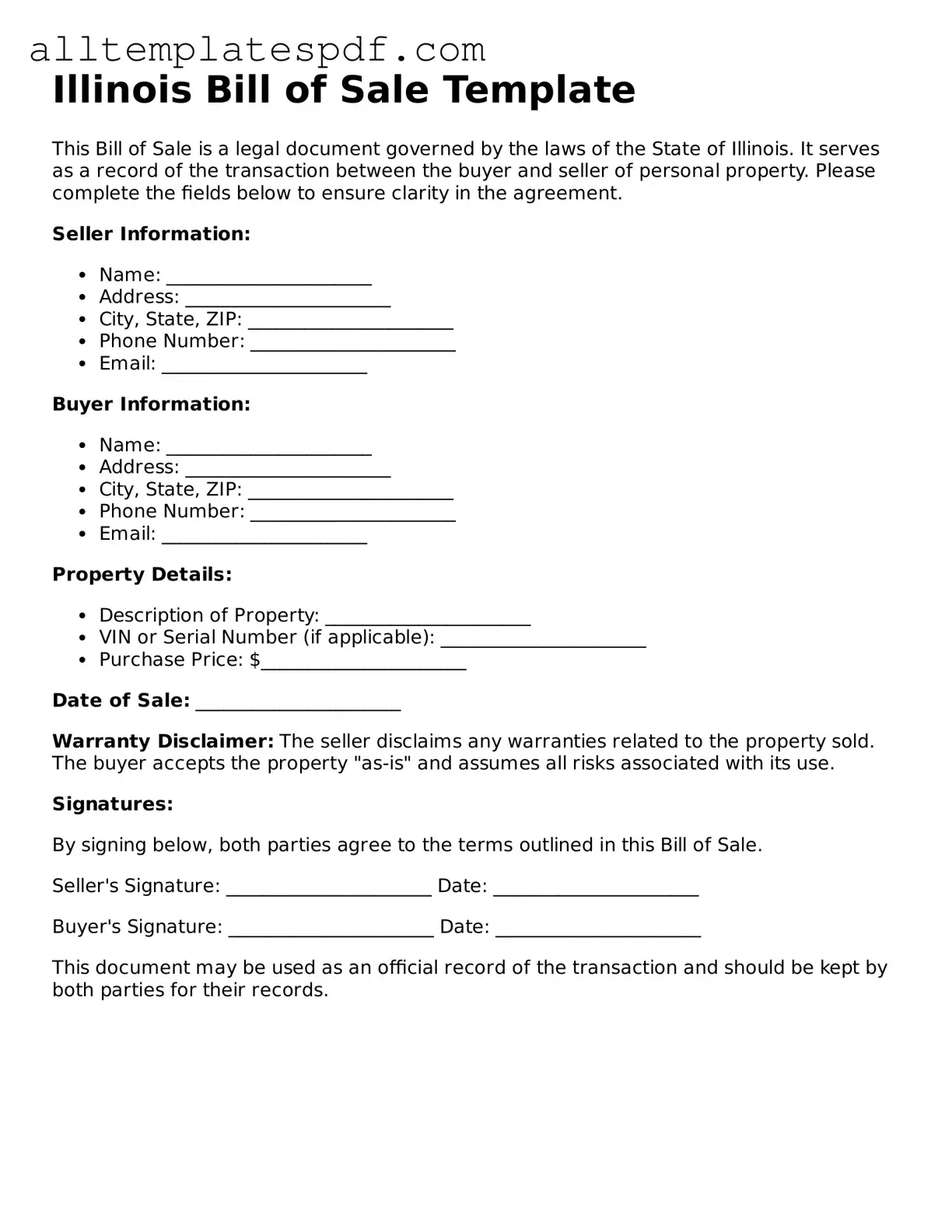Filling out the Illinois Bill of Sale form is an important step in the process of transferring ownership of a vehicle or personal property. However, many individuals encounter challenges that can lead to mistakes. One common error is failing to provide accurate information. When individuals do not double-check the details, such as the Vehicle Identification Number (VIN) or the description of the item, it can lead to confusion and potential disputes later on.
Another frequent mistake involves neglecting to include the date of the transaction. The date is crucial as it establishes when the transfer of ownership took place. Without this information, it may be difficult to resolve any issues that arise after the sale. Buyers and sellers alike should ensure that the date is clearly stated to avoid any misunderstandings.
Additionally, many people forget to obtain the necessary signatures. Both the buyer and seller must sign the Bill of Sale for it to be valid. If one party neglects to sign, the document may not hold up in a dispute. It is essential for both parties to review the form together and confirm that all required signatures are present before finalizing the transaction.
Another mistake involves overlooking the payment details. The Bill of Sale should clearly state the amount paid for the item. Without this information, it may be difficult to prove the terms of the sale. Including the payment method, whether it was cash, check, or another form, can also provide clarity and protect both parties.
Some individuals may fail to understand the importance of keeping a copy of the completed Bill of Sale. After the transaction is finalized, both parties should retain a copy for their records. This document serves as proof of the sale and can be invaluable if any disputes arise in the future. It is wise to ensure that both parties have their own copies.
Finally, many people overlook the necessity of including any warranties or guarantees. If the seller offers any assurances regarding the condition of the item, these should be explicitly stated in the Bill of Sale. This transparency can prevent misunderstandings and protect both the buyer and seller in case issues arise after the sale.
